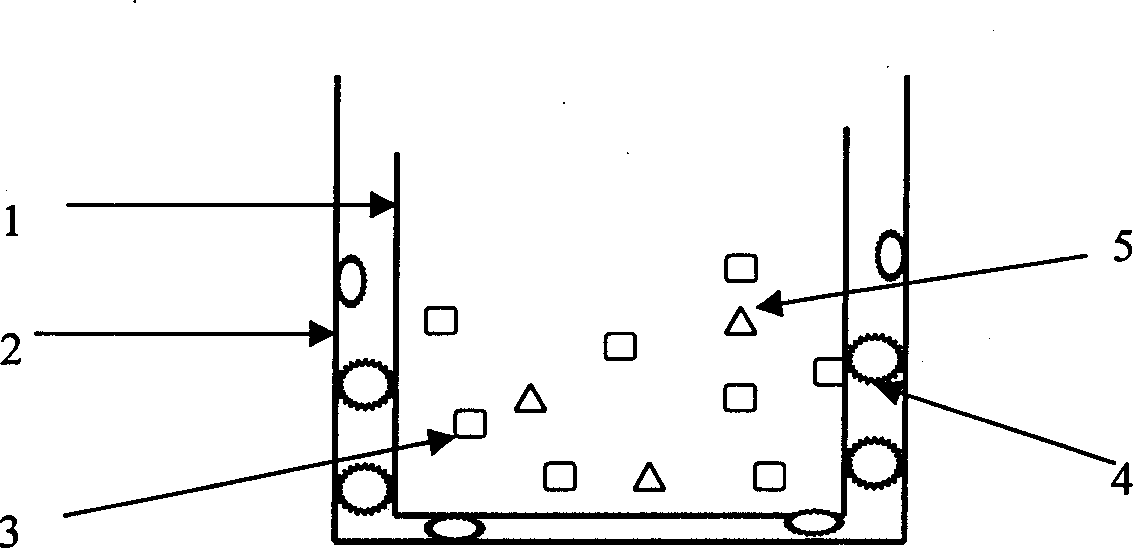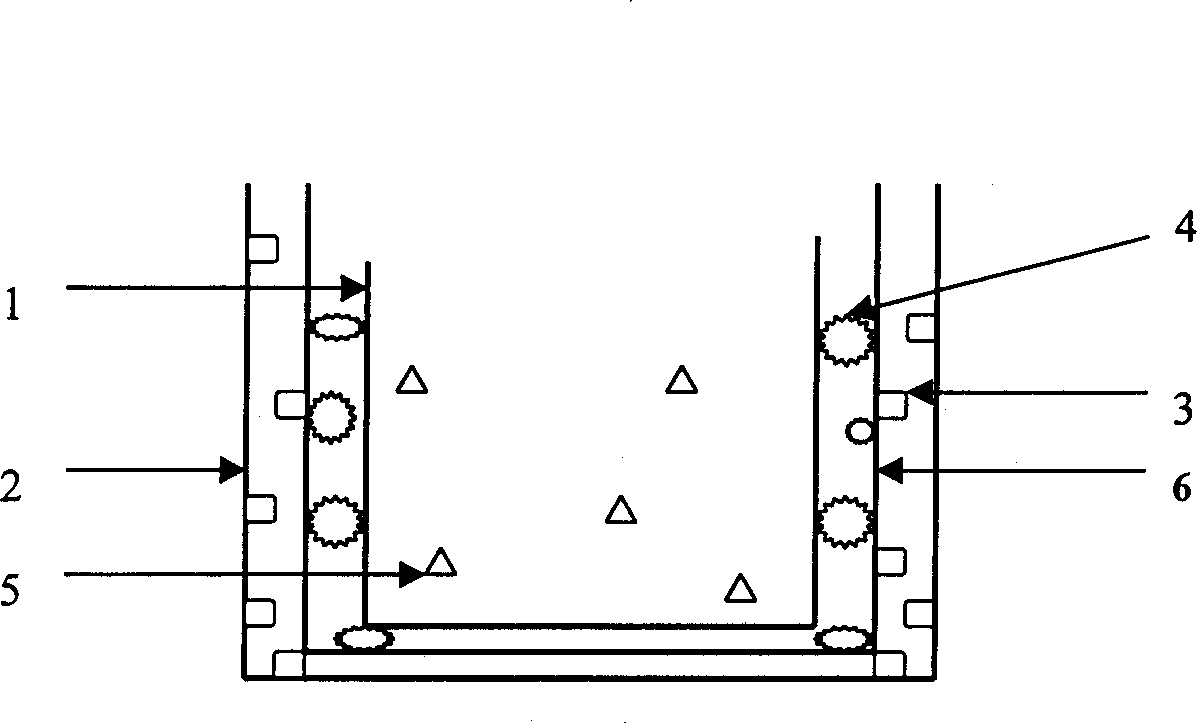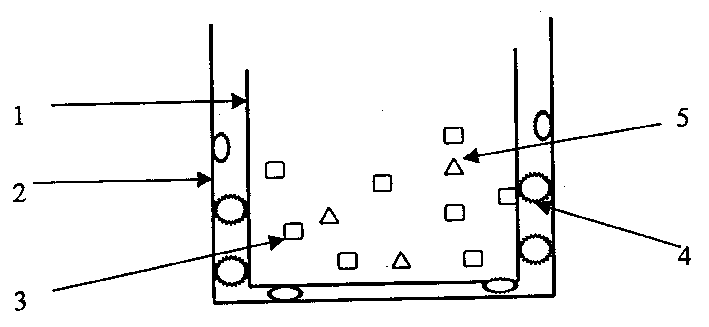Water-saving seedling-nourishing water-retaining paper bag
A water-saving and seedling technology, which is applied in the field of agriculture, forestry, and economic plant planting, can solve the problems of reducing the water absorption rate of water-absorbing resins, and achieve the effects of accelerating green coverage, improving the ecological environment, and saving money
- Summary
- Abstract
- Description
- Claims
- Application Information
AI Technical Summary
Problems solved by technology
Method used
Image
Examples
example 1
[0045] Example 1: Test of growing willow trees in a greenhouse. Two layers of nutrition and water retention bags, the inner bag 1 has a diameter of 20cm and a height of 49cm, the outer bag 2 has a diameter of 36cm and a height of 54cm, and the paper quality is 80g / m 2 , between inner and outer bags 1 and 2, 425g of water-absorbing resin / bags are applied. The control is pure calcareous sandy soil, where willow trees are planted directly. The inner layer bag 1 of the nutritional water retention bag is filled with peat, calcareous sand, 310g of slow-release nutrients and 0.5mg of plant growth regulator 5. Willows were planted in pots with a bottom diameter of 50 cm. After planting, both the control and nutrient water retention bags were watered with 5 kg. Avoid rainwater during management. Observation after 80 days, compared with withered and dead, the willow plant in the nutrient water retention bag grows vigorously, and the bag is opened to watch, and many new roots grow out...
example 2
[0046] Example 2: Experiment of planting boxwood in greenhouse. Three layers of nutrition and water retention bags, the inner bag 1 is 20cm in diameter and 49cm in height, the middle bag 6 and the outer bag 2 are 36cm in diameter and 54cm in height, and the paper quality is 100g / m 2 , 50g / only water-absorbing resin 4 is coated between middle and inner bag 6,1. 38g of slow-release nutrition is applied between the outer bag 2 and the middle bag 6, and 0.5mg of the plant growth regulator 5 is placed in the inner bag 1. The control is pure calcareous sandy soil, where trees are planted directly. The inner layer bag 1 of the nutrient water retention bag is filled with calcareous sand and peat. The control died soon, but the nutrient water-retaining bag Buxus survived for more than 80 days without adding water and grew many new roots.
example 3
[0047] Example 3: Greenhouse planting Caragana test. Control, two-layer and three-layer nutritional water retention bags were treated. The inner bag 1 of the two-layer nutrient water retention bag has a diameter of 18cm and a height of 38cm. The inner layer bag 1 of the three-layer nutrient water retention bag has a diameter of 18 cm and a height of 38 cm. Contrast is that pure calcareous sandy soil is directly planted trees, and the calcareous sandy soil and peat ratio of packing into the nutrient water retention bag inner layer bag 1 are 1:1, 1:2, 2:1 respectively. Planting and management methods are the same as examples 1 and 2. Observation after 70 days shows that the control leaves are withered and yellow, falling off, and have no new roots, while the caragana plants in the nutrient water retention bag grow well, with lush green branches and more new roots.
[0048] References 1. Edited by He Zengyao et al. 1991. Introduction to Agricultural Environmental Science. Shan...
PUM
 Login to View More
Login to View More Abstract
Description
Claims
Application Information
 Login to View More
Login to View More - R&D
- Intellectual Property
- Life Sciences
- Materials
- Tech Scout
- Unparalleled Data Quality
- Higher Quality Content
- 60% Fewer Hallucinations
Browse by: Latest US Patents, China's latest patents, Technical Efficacy Thesaurus, Application Domain, Technology Topic, Popular Technical Reports.
© 2025 PatSnap. All rights reserved.Legal|Privacy policy|Modern Slavery Act Transparency Statement|Sitemap|About US| Contact US: help@patsnap.com



